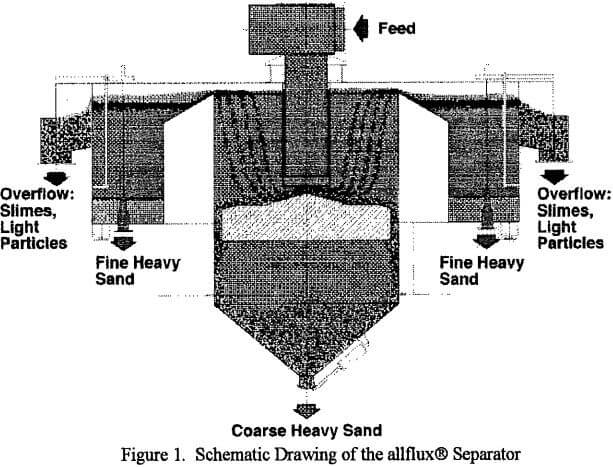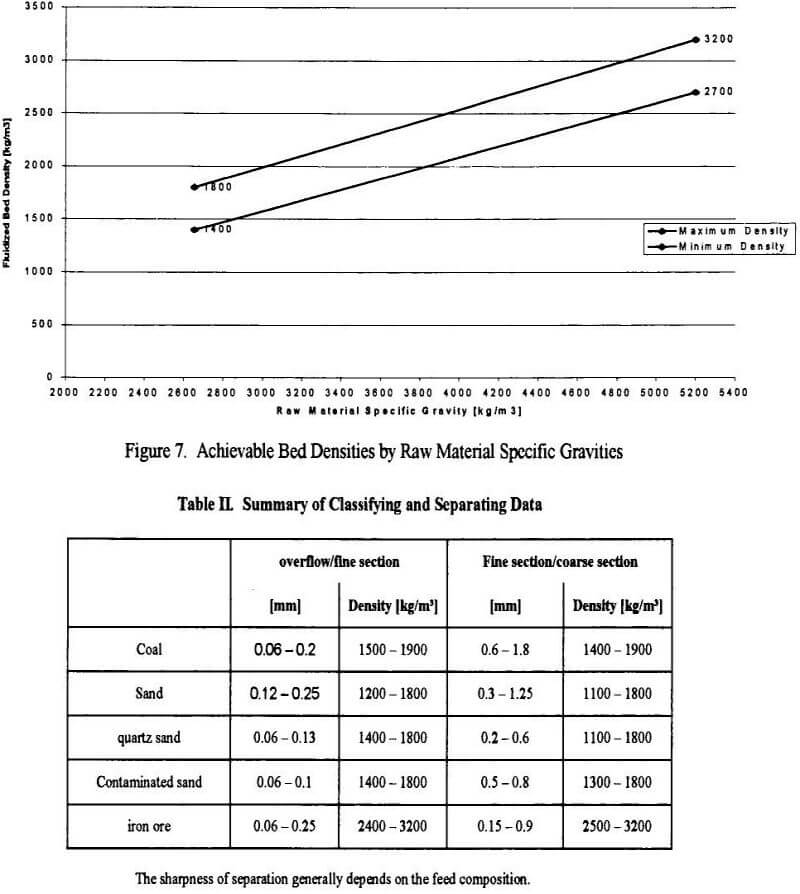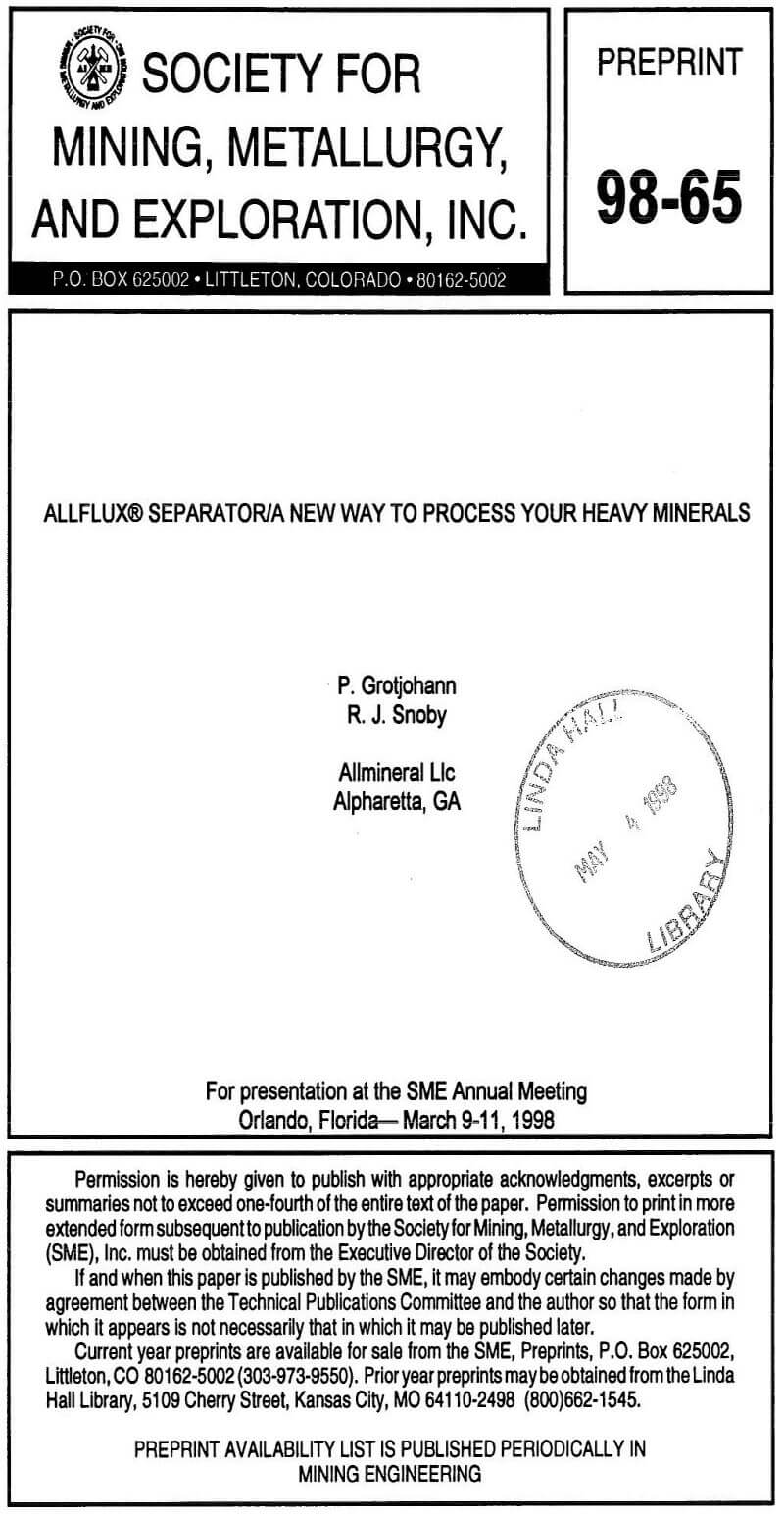Heavy mineral process circuits combine a number of process machinery used in different steps of desliming, classification, separation, beneficiation, enrichment, and dewatering of the desired products. The right choice of equipment has an impact on the technical and economical feasibility of today’s and future projects. Not only the capital investment and operational costs but also the complexity of processing circuits relative to control equipment and the amount and quality of staff strongly influence project feasibility. Not surprisingly the successful equipment suppliers to the heavy mineral processing industry constantly strive to develop equipment which combine features like high throughput and sharp separation/classification with ease of operation, a minimum of personnel, and less wear parts. The allflux separator meets these demands. Its design allows it to treat extremely high massflows in a single unit. The allflux classifies a slurry feed into two size fractions, upgrades mineral contents by specific gravity, deslimes, and thickens the products before they enter following process steps. This has been proven by test and operation experience.
Technical Description
The allflux separator is a round, center feed process vessel that is sized according to hydraulic load. The process uses a unique combination of rising current and fluidized bed techniques and can be divided into three stages. The principle of an allflux separator is schematically shown in Figure 1.

Figures 2a and 2b show the density distribution through the coarse sand section of an allflux-separator at the sand plant Risch in northwestern Germany. The numbers are measured data of the fluidized bed. Just above the discharge gap bed densities around 1700 kg/m³ are achieved, guaranteeing that no light particles can enter the coarse clean sand discharge hopper. Further, the average density inside the separation room is approximately 1300 kg/m³. Using these numbers in the equal falling law as the liquid density confirms the practical proven number of a separating density of 1800 kg/m³.
A summary of the above outlined operation and test data illustrate that it is possible to create different fluidized bed densities depending on different raw materials in an allflux fluidized bed separator. These can be easily used to separate and classify various types of sands. Figure 7 shows a chart outlining the maximum and minimum possible bed densities from quartz sand to iron ore. The density window describes an. area dependent on raw material specific gravity, feed grain size distribution, particle shape, and upstream water velocity. It is of further influence if the unit is only classifying or classifying and separating as well. Table n summarizes data of separation gravities compared to their accompanied classification outpoints
The iron ore numbers show a good example of the classification and separation overlay. The achievable bed density rises up to 3200 kg/m³. The closer fluidized particles stay together in the liquid, the higher the achieved dense medium. Logically, this will happen with the minimum amount of upstream water. Lesser upstream water also reduces the classification cutpoint. In this case, the d50 of the iron ore could be as low as 0.15 mm in the coarse sand section and 0.06 mm in the fine sand section. Rising and lowering the fluidized bed height will influence the classification cutpoint between certain limits. Since this feature is programmable and automatically controlled, it is used to automatically correct the particle size distribution of sands independent of their feed distribution.


